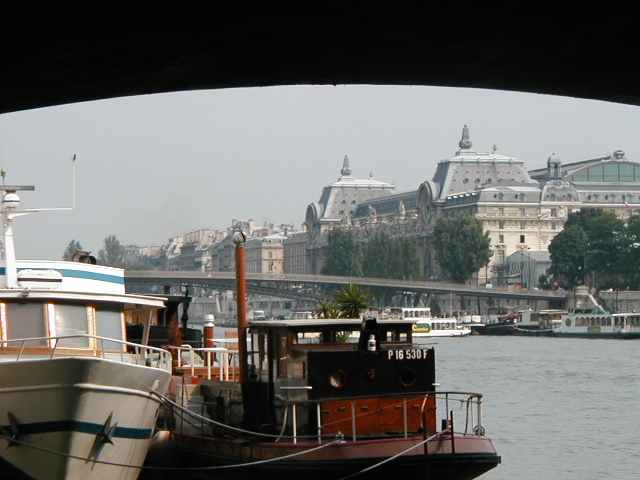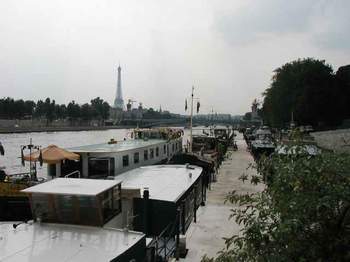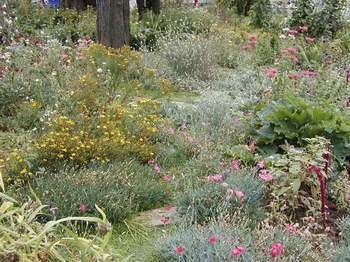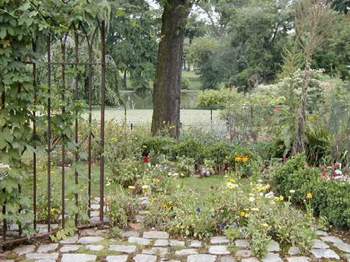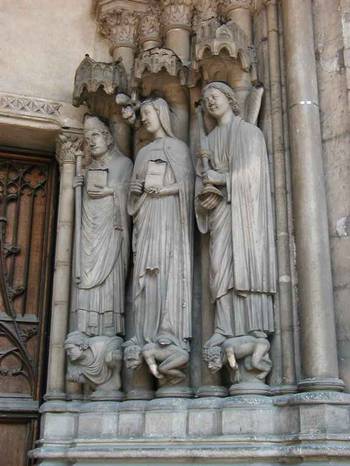 13th century figures in the central doorway of Église St.-Germain-L'Auxerrois -- the middle figure holds a candle, that the devil is trying to extinguish. But an angel nearby stands ready to re-ignite the candle.
The carvings above and below are also from the 13th century doorway. Notice the birds nest on top of one of the figures, below, and the dead bird hanging by a string. Wish I knew the story here.
Inside the Église St.-Germain-L'Auxerrois
After leaving the church, we walked on the busy shopping street, Rue Rivoli, toward the Hôtel de Ville. We stopped at the pretty park at the Tour St. Jacques. The tower was encased in scaffolding, but we still enjoyed the park. Crowded as the area is, there are plenty of birds here, and hence, there was a black cat hunting them. The cat and a rabbit live in a clump of bushes in the little park. I tried to get a pic of the cat, but it was too sneaky and evasive. Last year at the Hôtel de Ville (the city hall for all of Paris) there was an exhibit about the Seine. This year, there is one about the canals of Paris. I now realize the significance of these water-based exhibits at city hall. Paris was ruled by a representative of the king until the 13th century when municipal government was introduced. According to the Michelin guide, "The powerful watermen's guild held the monopoly over traffic on the rivers Seine, Oise, Marne, and Yonne, and regulated levies. In 1260, Louis IX appointed leading men of the guild to administer the township. The municipal assembly was headed by a merchant provost and four aldermen who were elected by notables, who in turn nominated the town councillors."
The Hôtel de Ville, completed in the early 17th century.
Saturday, July 28, 2001In yesterday's International Herald Tribune, there was an article about how miserable Parisians are this summer. We had no idea! Anyway, it brought our attention to something that I think I had heard, but I had no notion of the extent of it. A section of what is normally very busy roadway on the right bank of the Seine has been closed to autos and is open only to cyclists, pedestrians, and roller bladers for part of this summer. So we made a point of walking it yesterday. It was about 4 miles. It is wonderful to be able to walk along the Seine and really enjoy it -- I hope they do this every summer (in spite of what the author of the article has to say about it).
This sign announces the "day of the pedestrian and the cyclist" -- that the road on the right bank is closed to cars, open only to pedestrians and cyclists, from July 15 to August 15, except for July 29 when the Tour de France will be using the road.
The "piéton" on the white line is Tom.
As we walked along the Seine with NO CARS whizzing by us, we noticed this marker. Way above our heads is the mark for the water level during the 1910 flood.
Notre Dame comes into view.
Almost home now -- people are cooling off in this fountain/pool in the center of the Champ de Mars. |
Friday, July 27, 2001Late yesterday afternoon, we boarded the Métro and took it to Châtelet, in the heart of Paris. We picked this area for our walk because I realized, much to my horror and amazement, that there was a significant church there that we had not yet visited. The Église St.-Germain-L'Auxerrois is very, very old. It is named after St. Germanus, Bishop of Auxerre in the 5th century. A sanctuary existed on this site as early as the 8th century. It was replaced by a Norman church, then by a church designed by Robert the Pious. When the Valois royal family moved to the Louvre in the 14th century, this became the king's parish church. So of course, lots of famous people were buried in this church. The porch is the most original feature of the structure, dating from 1435 and 1439. The central doorway is 13th century.
The central doorway of the Église St.-Germain-L'Auxerrois
This stained glass dates to the 15th century |

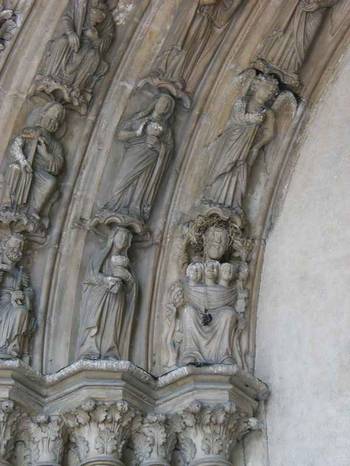

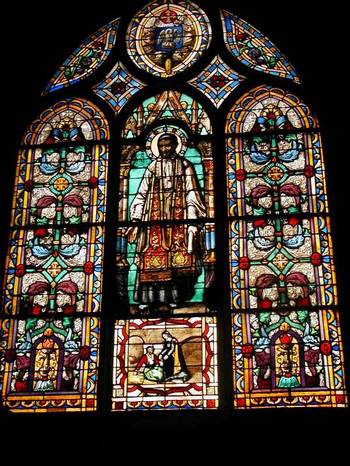
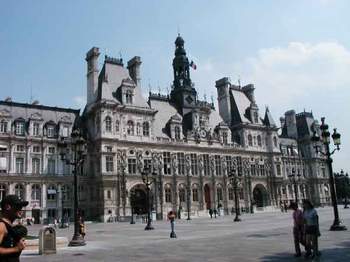
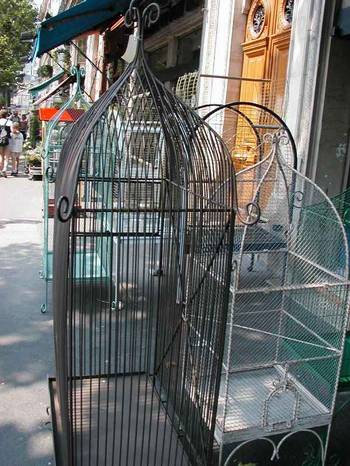
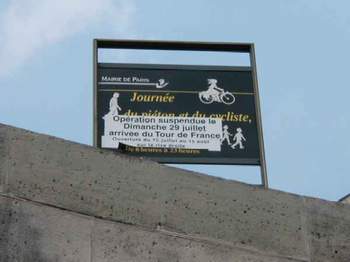

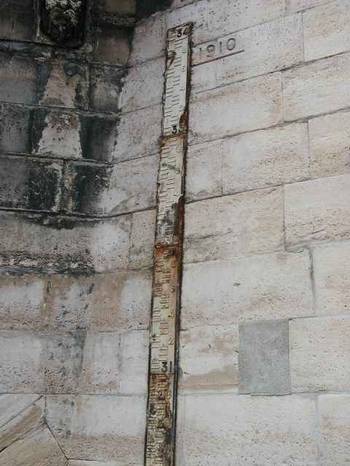

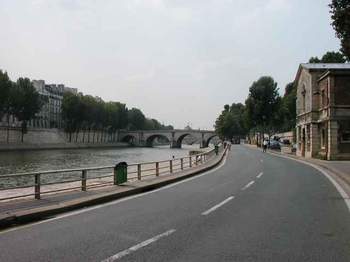
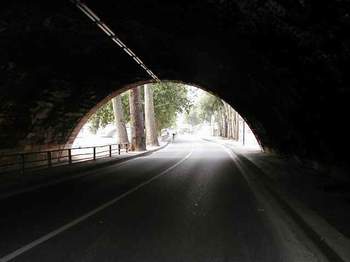





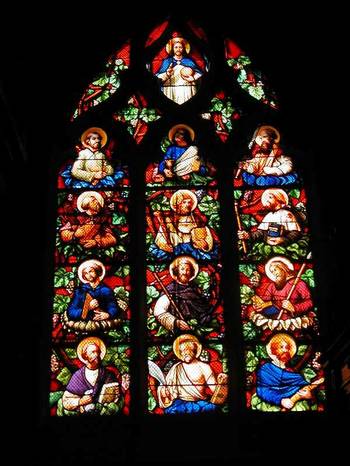
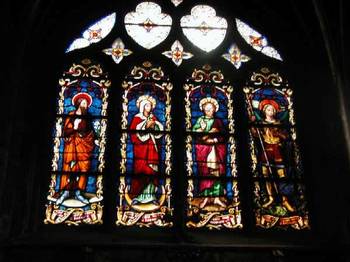
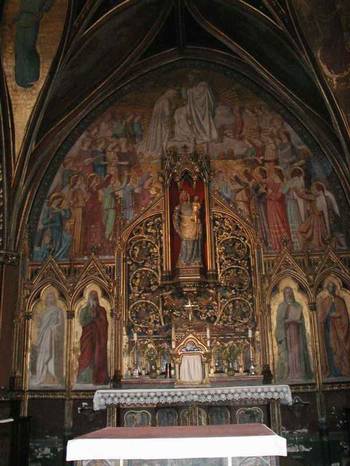


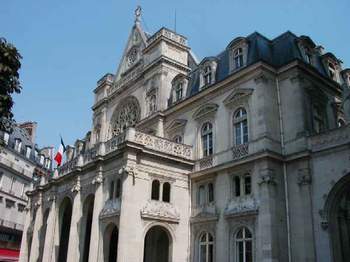
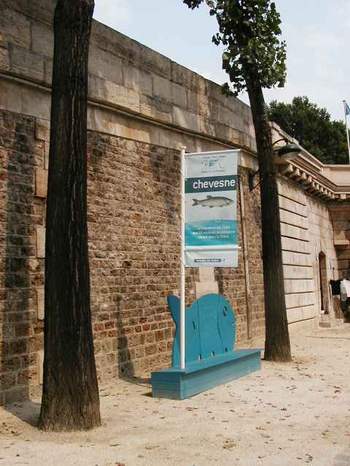
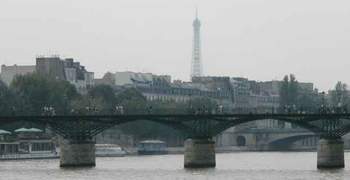
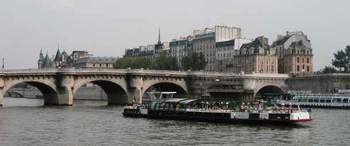
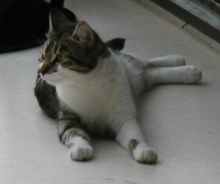 This lucky cat lives on a boat
on the Seine.
This lucky cat lives on a boat
on the Seine.